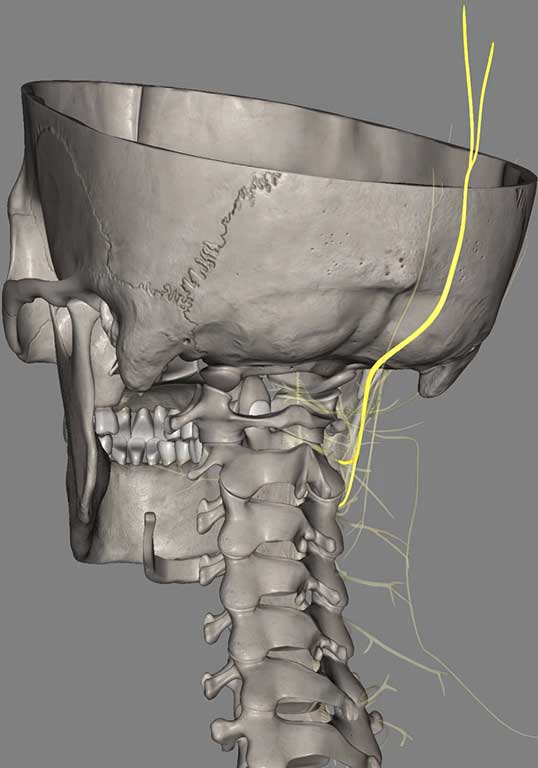
Greater occipital nerve (GON) blocks are a safe and effective procedure used to diagnose and manage certain types of chronic head and neck pain.
At Canberra Neurology, our experienced neurologists use GON blocks as part of a comprehensive approach to treating conditions such as occipital neuralgia, chronic migraine, and cervicogenic headache. These targeted injections can offer meaningful pain relief when medications alone are not enough.
Whether you’ve been living with persistent pain at the back of your head or have been diagnosed with a condition affecting the cervical nerves, a GON block may provide both diagnostic clarity and therapeutic benefit.
The greater occipital nerves originate from the second cervical spinal nerve (C2) and provide sensory innervation to much of the back of the scalp. When this nerve is compressed or irritated, it can result in intense, often debilitating head pain.
A GON block involves injecting local anaesthetic – sometimes combined with corticosteroids – around the nerve to relieve inflammation and block pain signals.
This quick, minimally invasive procedure is commonly performed in our clinic and can provide relief lasting from several days to several months, depending on the underlying cause.
Overview:
Occipital neuralgia is a form of neuropathic pain arising from irritation or injury to the greater occipital nerve. It typically presents as sharp, shooting pain that begins at the base of the skull and can radiate upwards to the scalp.
Symptoms:
Causes:
Risks:
Treatment Options:
GON blocks are often the first-line interventional treatment and can provide both rapid symptom relief and confirmation of the diagnosis.
Overview:
Chronic migraine affects approximately 2–3% of the Australian population and is defined as headache occurring on 15 or more days per month for at least three months, with features of migraine on at least eight of those days. In some cases, pain may be linked to irritation of the greater occipital nerve.
Symptoms:
Causes:
Risks:
Treatment Options:
At Canberra Neurology, GON blocks are often combined with botulinum toxin therapy to improve outcomes in complex or refractory cases of chronic migraine.
Overview:
Cervicogenic headaches are headaches that originate from problems in the neck structures, including joints, muscles, and nerves. Pain is often referred to the back of the head via the greater occipital nerve.
Symptoms:
Causes:
Risks:
Treatment Options:
GON blocks are particularly effective when the occipital nerve is sensitised by nearby musculoskeletal or joint dysfunction.
A GON block at Canberra Neurology is a straightforward, outpatient procedure:
Patients are monitored briefly after the injection and can resume normal activities the same day.
GON blocks are generally well tolerated. Common side effects include:
Serious complications are rare, especially when performed by trained specialists. The team at Canberra Neurology adheres to strict clinical protocols to ensure safety and comfort throughout the procedure.



Fee Increase
Please note that from the 1st of December 2025, our follow up appointment fee has increased by $25. All other fees remain the same.
Rooms Closed
Our rooms are closed from the 18th of December to the 5th of January for holidays.